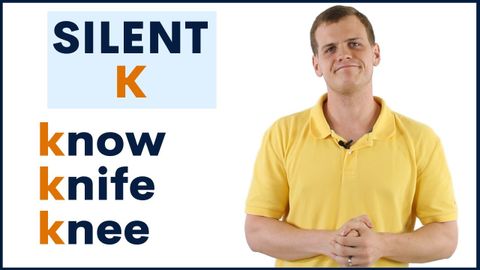
Subtitles & vocabulary
Silent K Words | Learn English Pronunciation Rules
00
Summer posted on 2021/10/01Save
Video vocabulary
sort
US /sɔrt/
・
UK /sɔ:t/
- Transitive Verb
- To organize things by putting them into groups
- To deal with things in an organized way
- Noun
- Group or class of similar things or people
A1TOEIC
More pronunciation
US /prəˌnʌnsiˈeʃən/
・
UK /prəˌnʌnsiˈeɪʃn/
- Noun (Countable/Uncountable)
- How a word is said; how a word sounds
- The manner in which someone utters a word.
B1
More Use Energy
Unlock All Vocabulary
Unlock pronunciation, explanations, and filters
